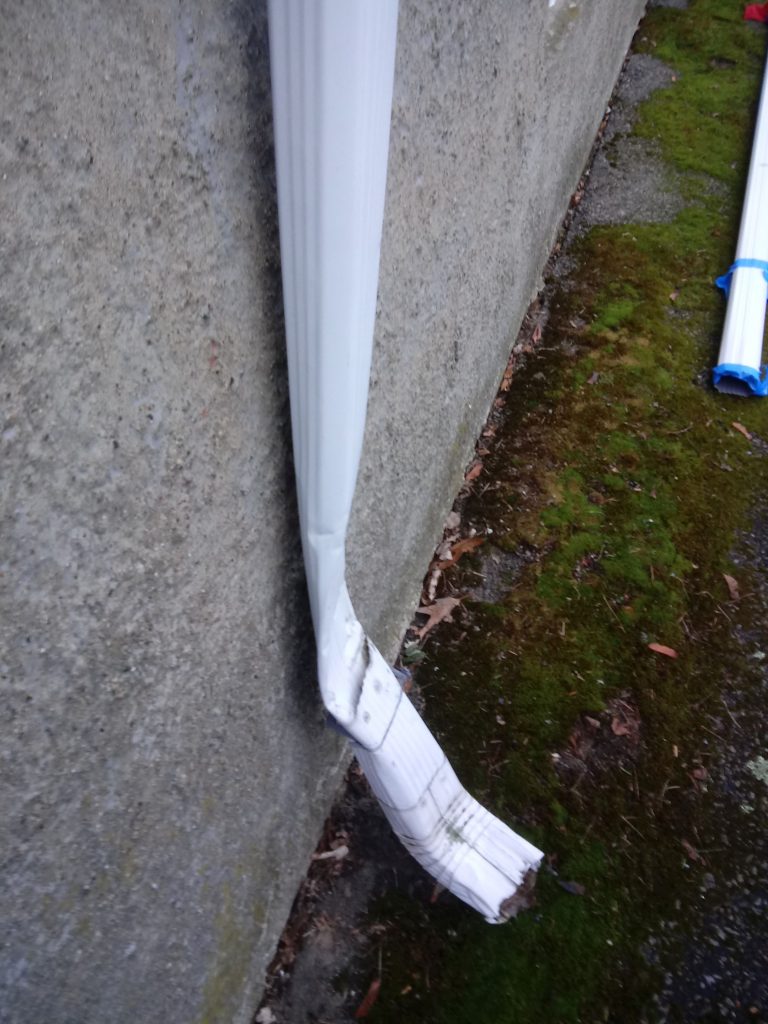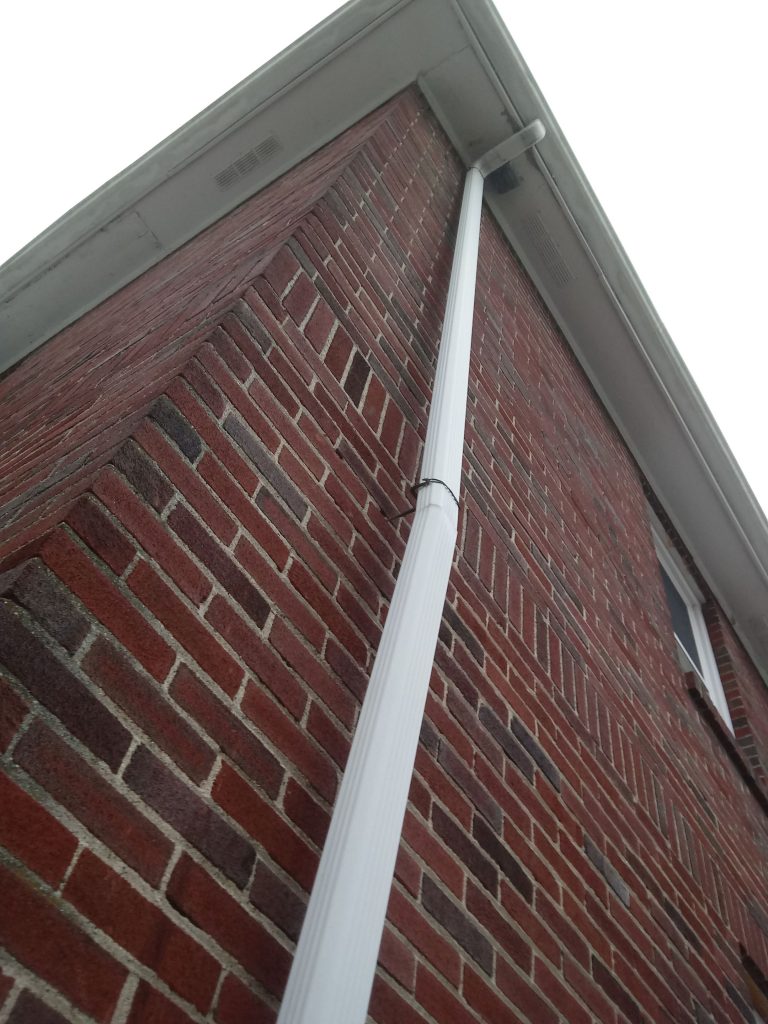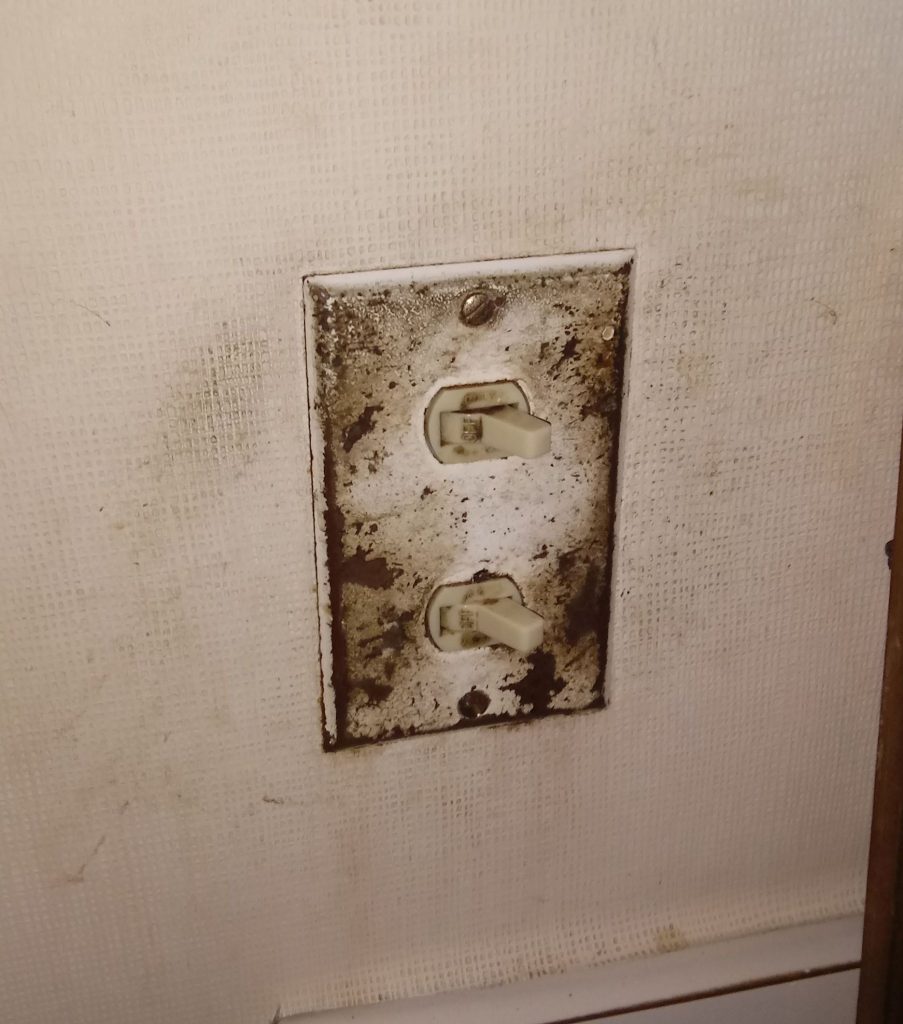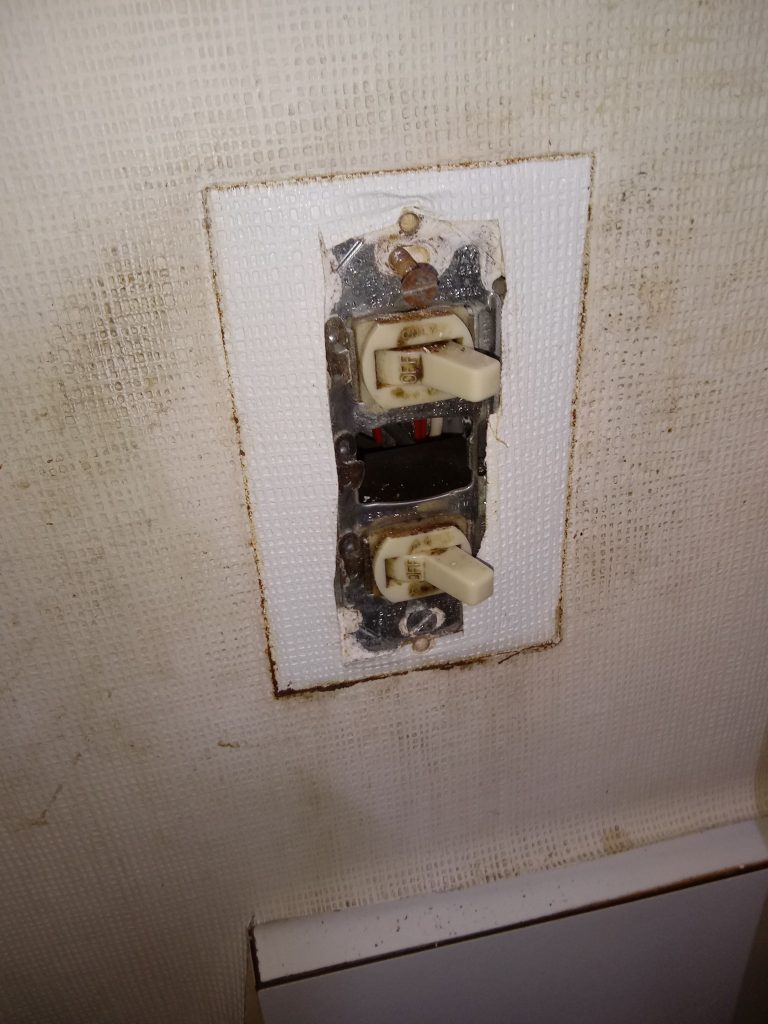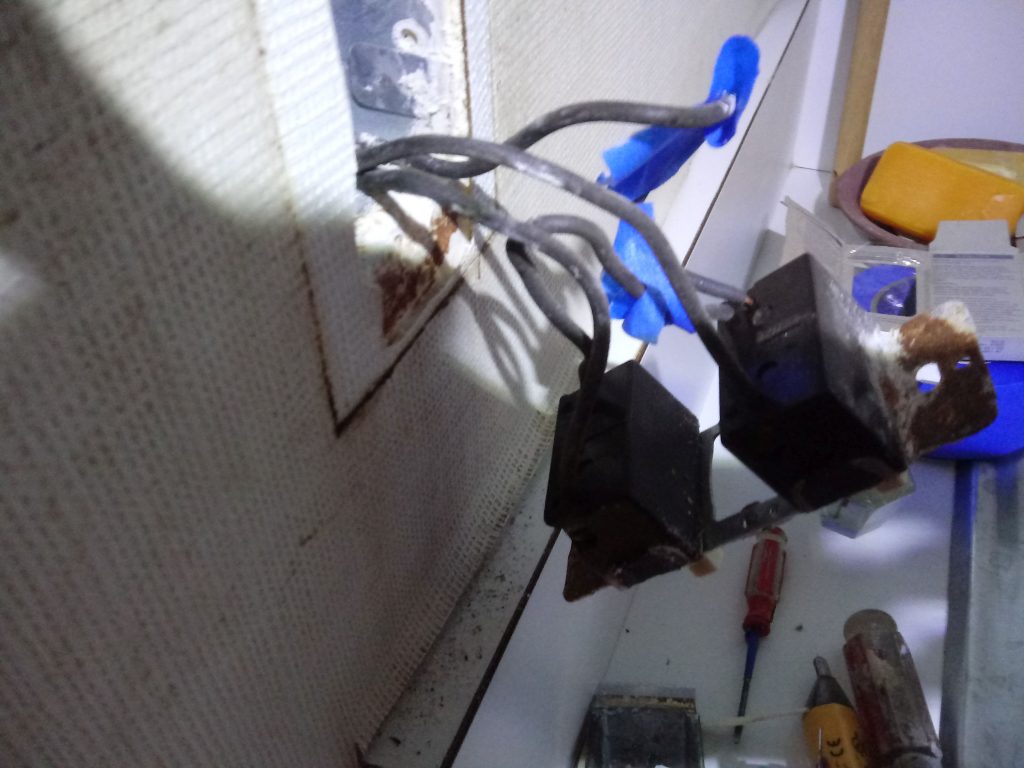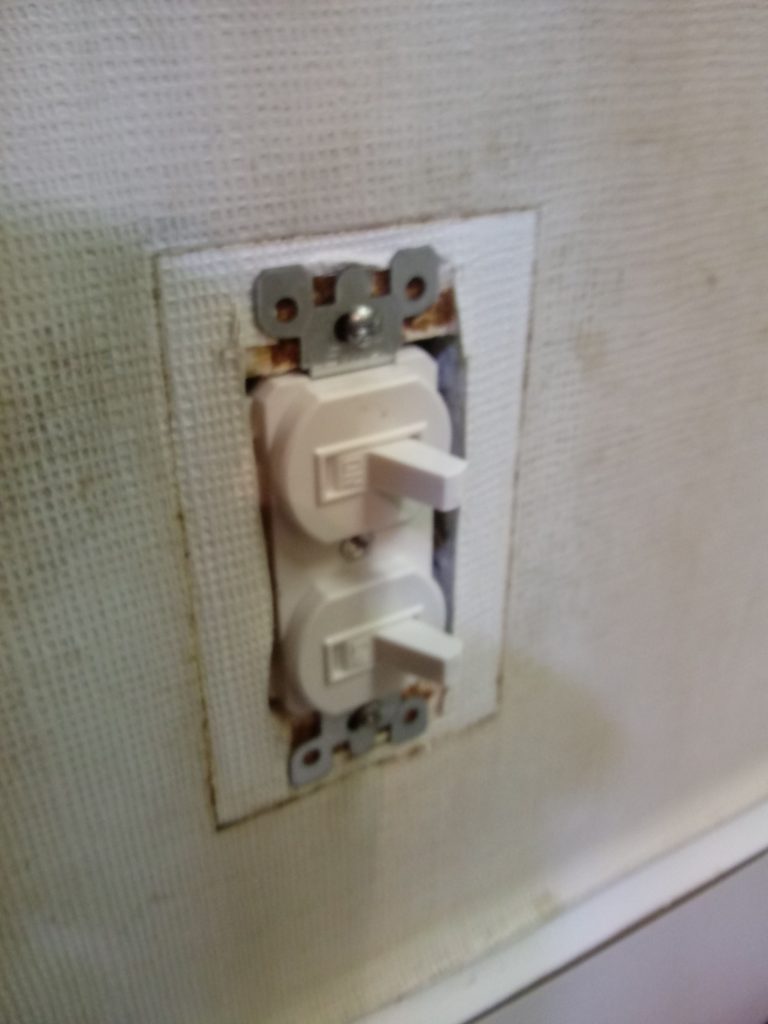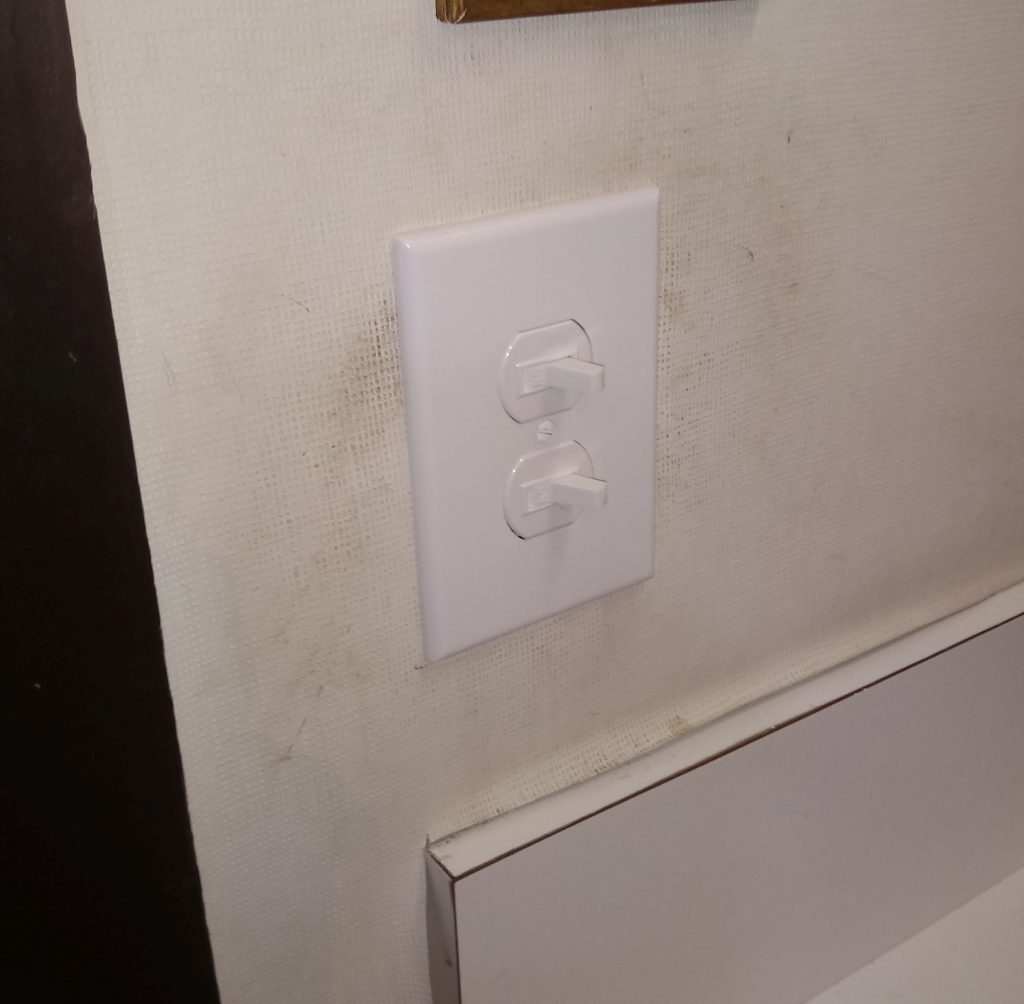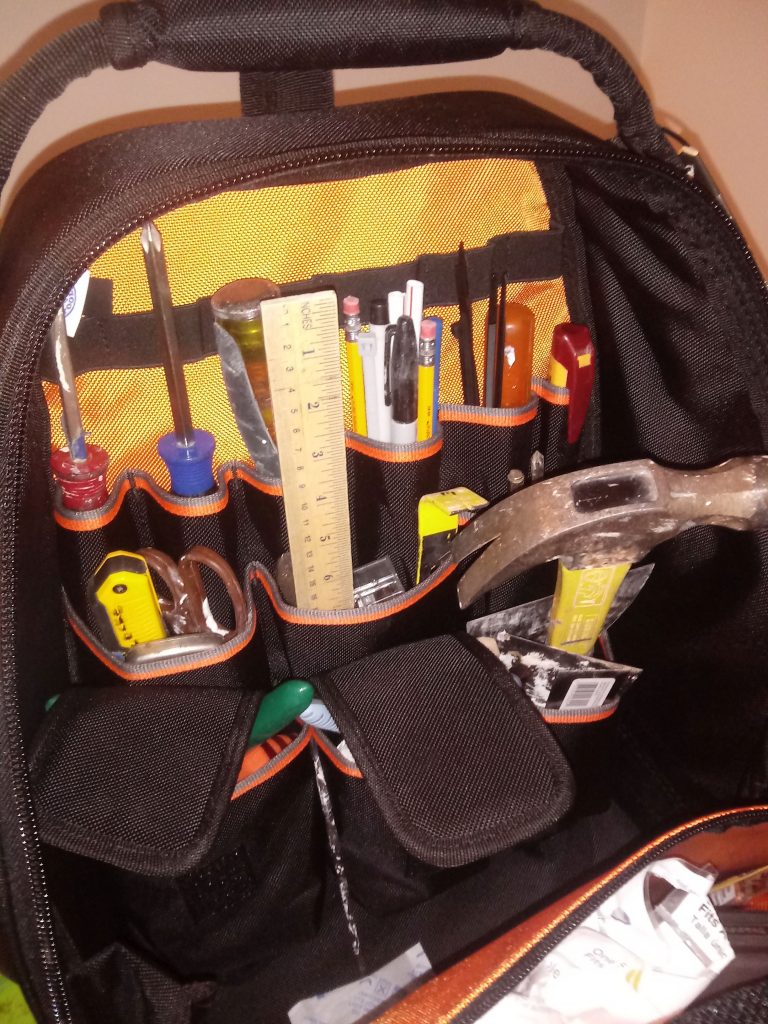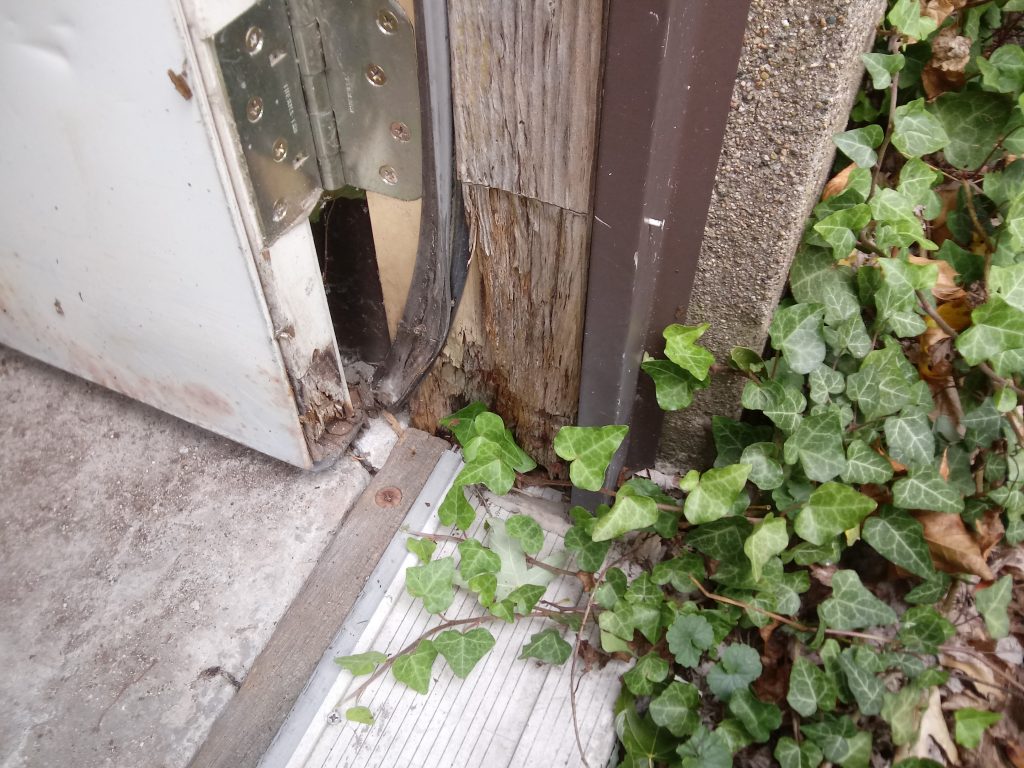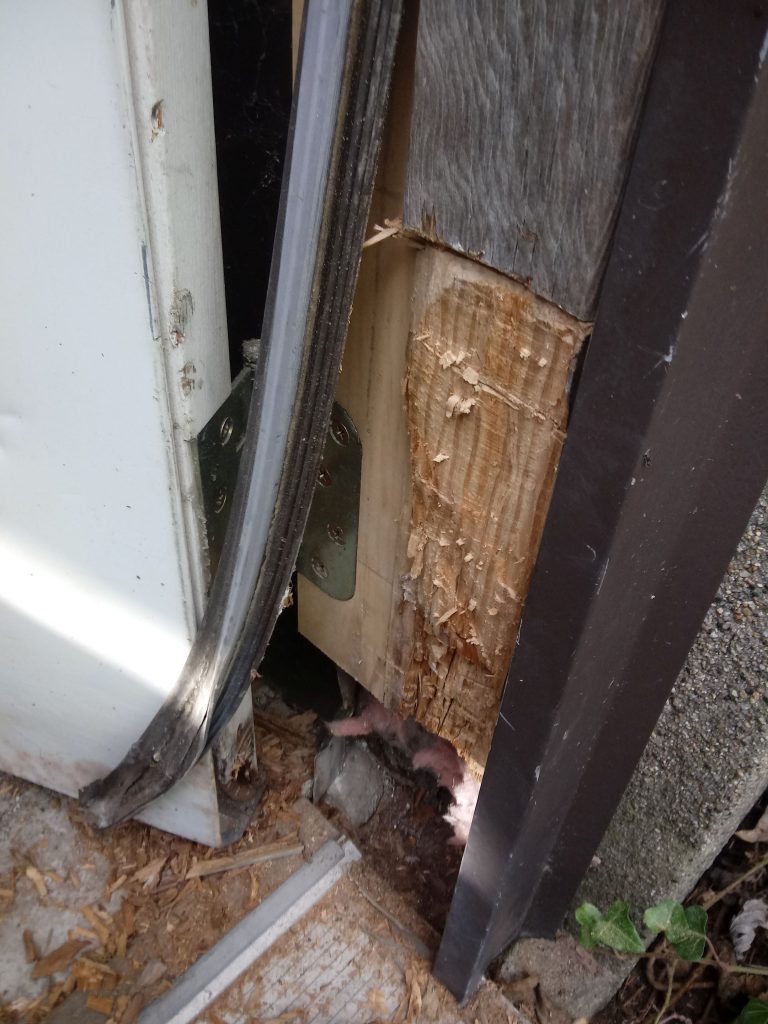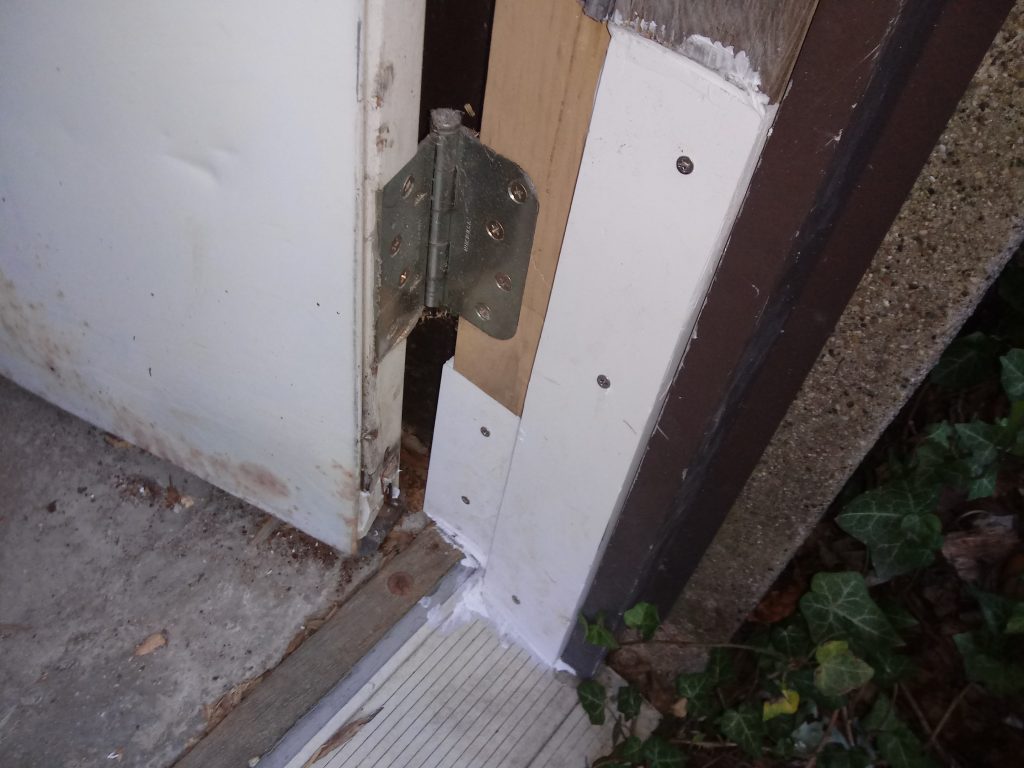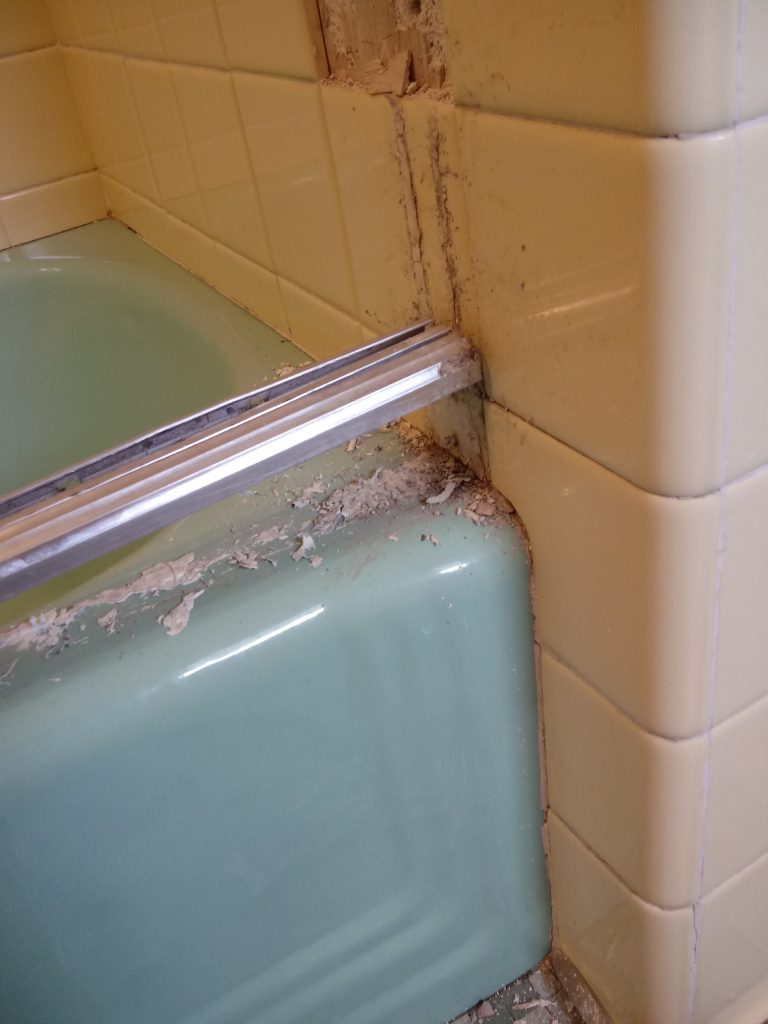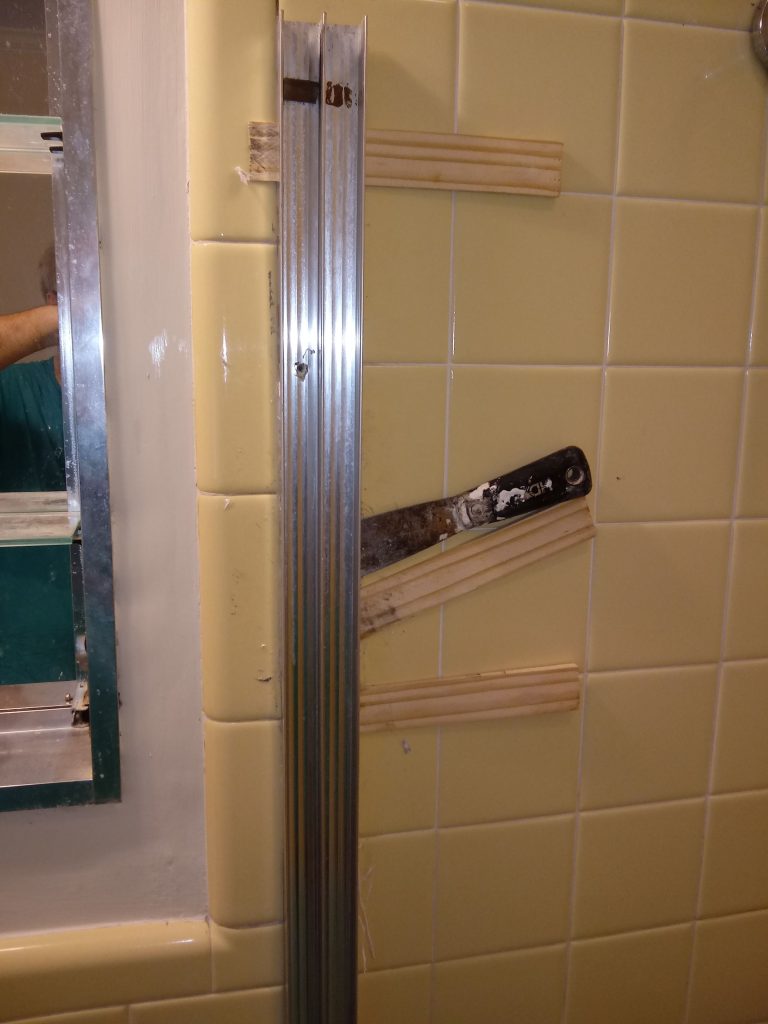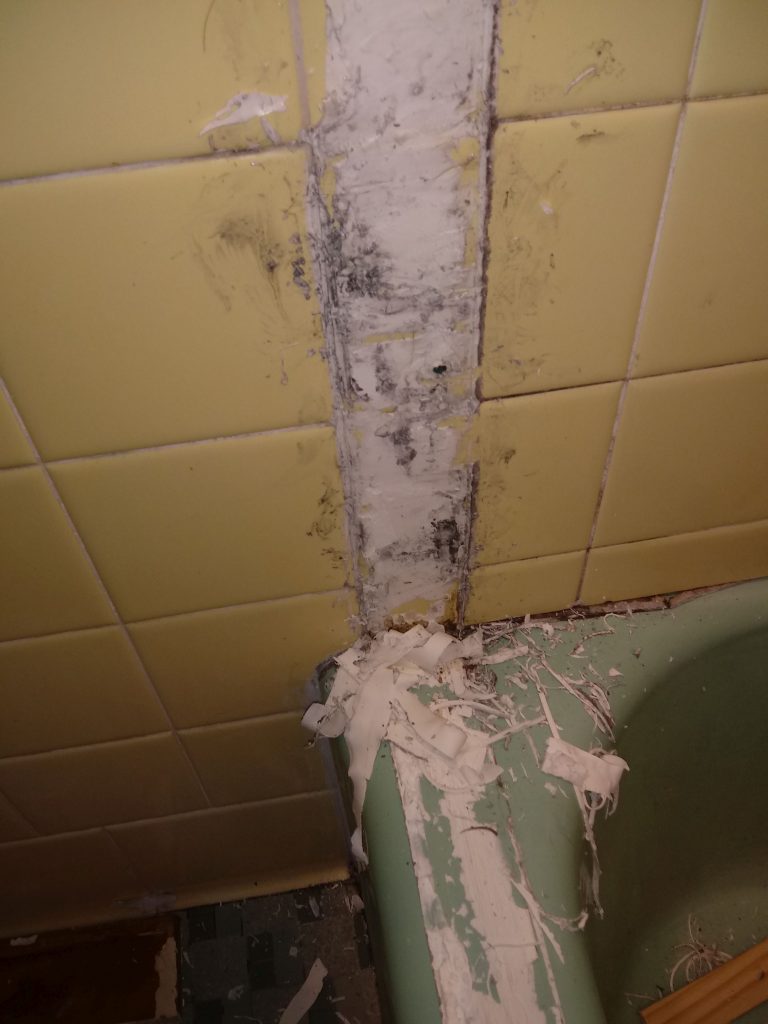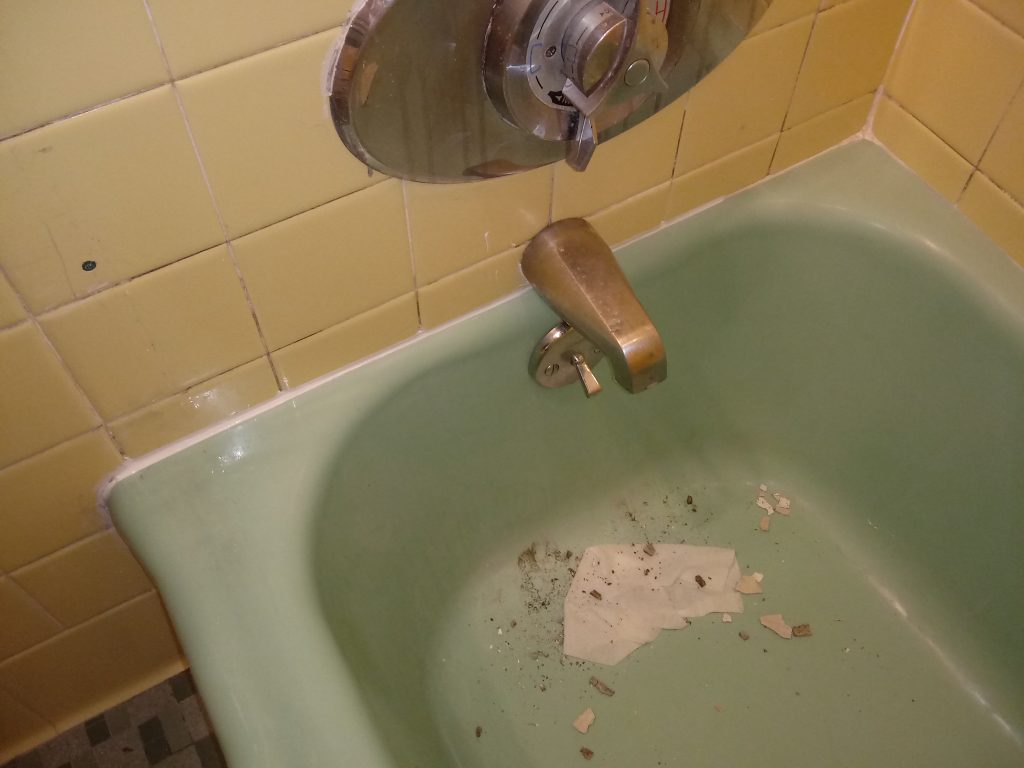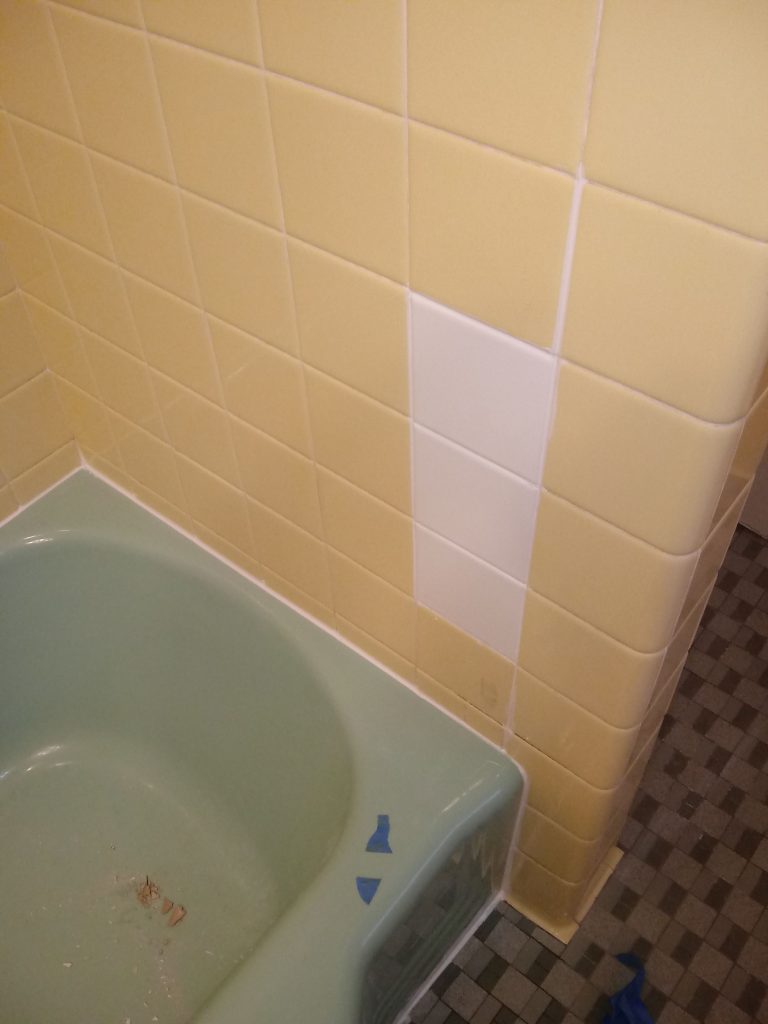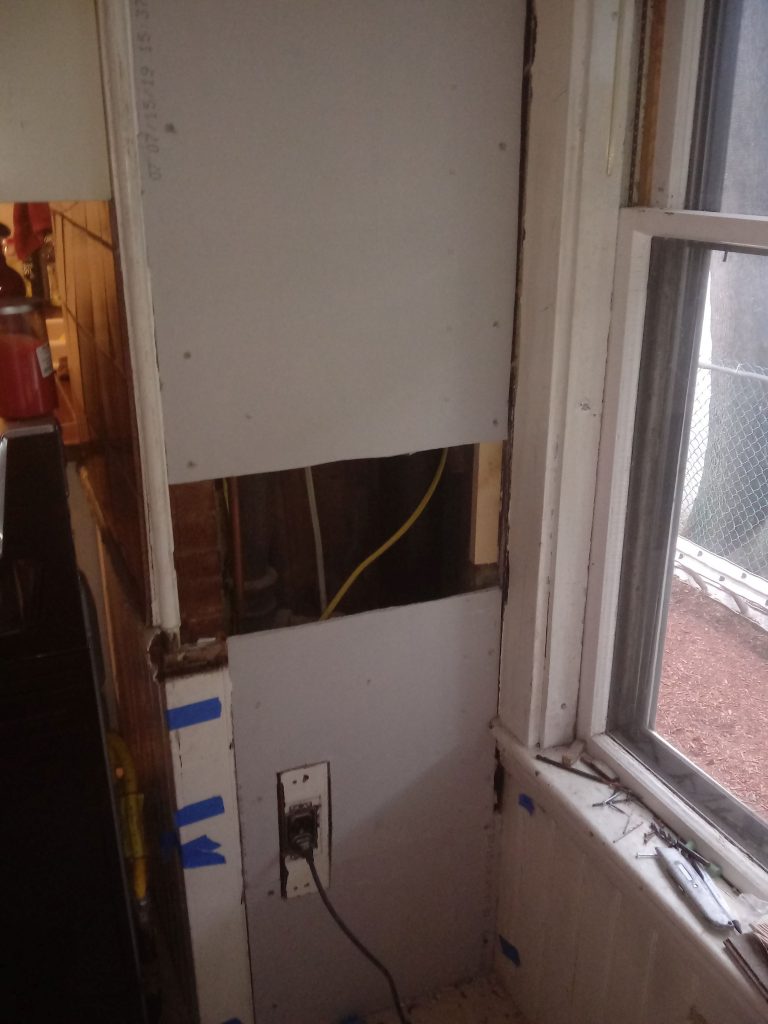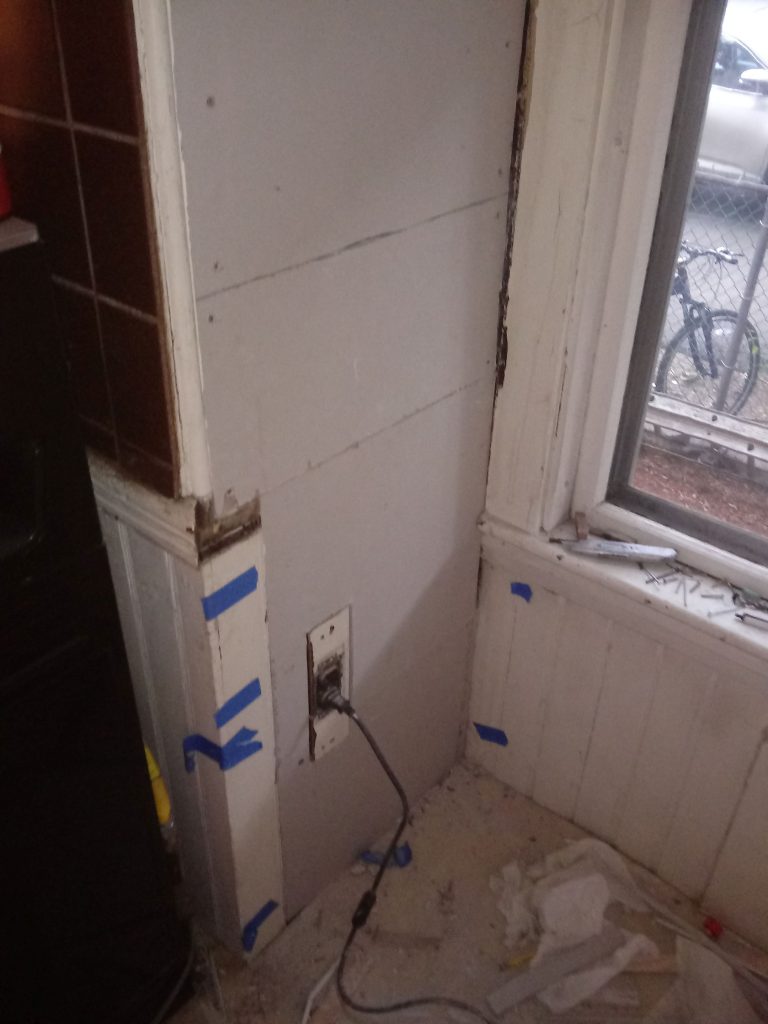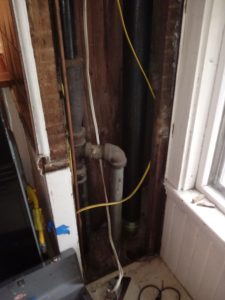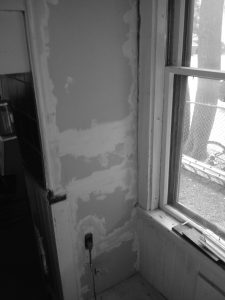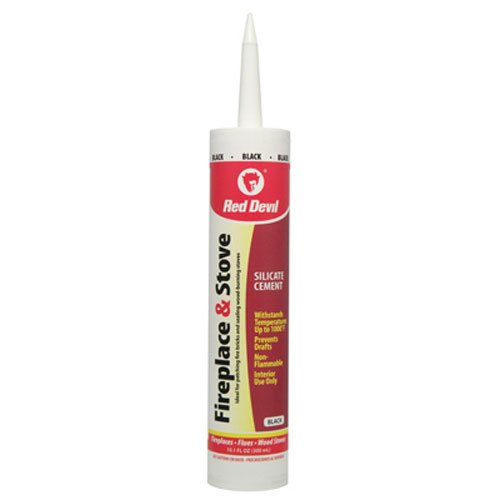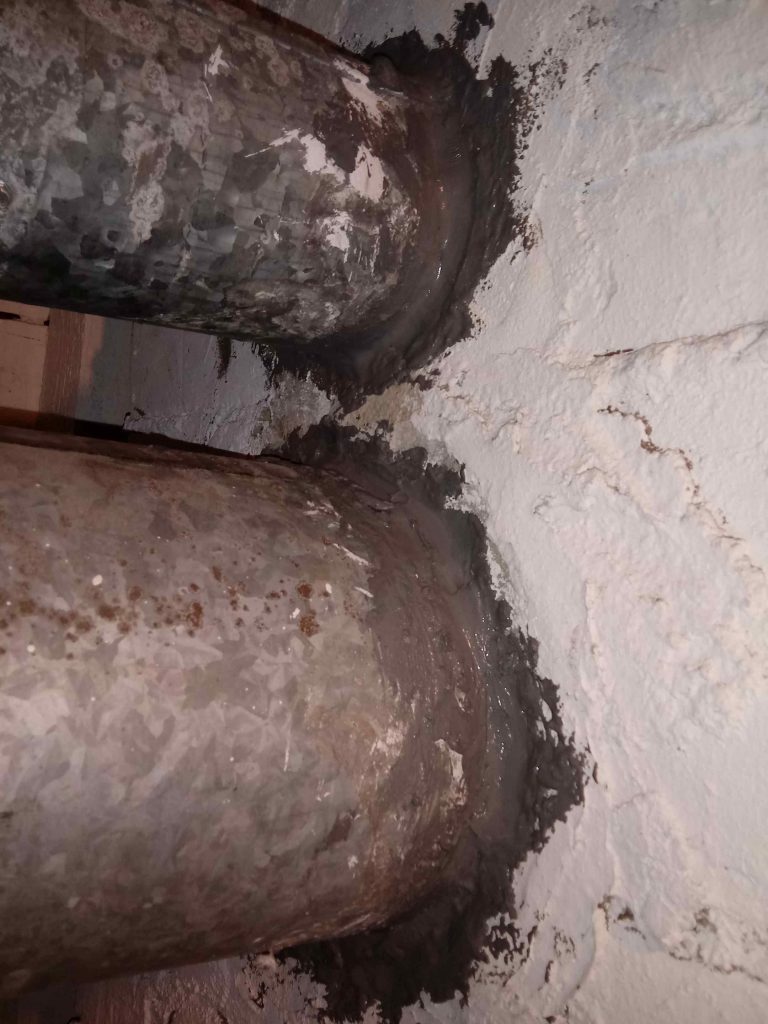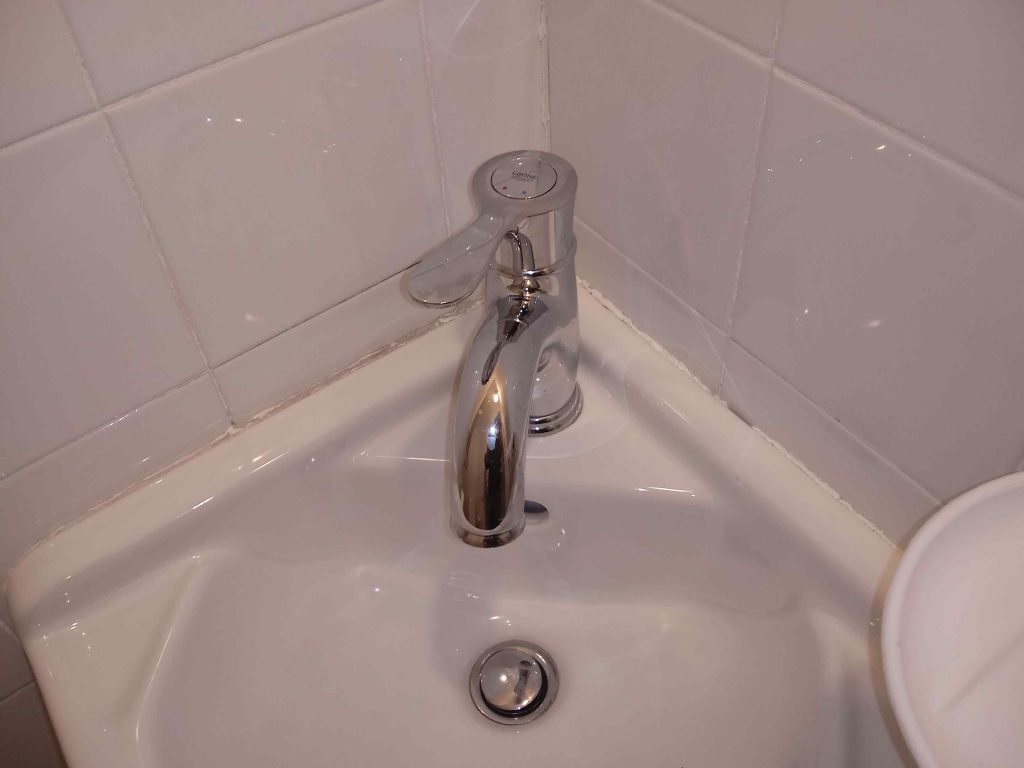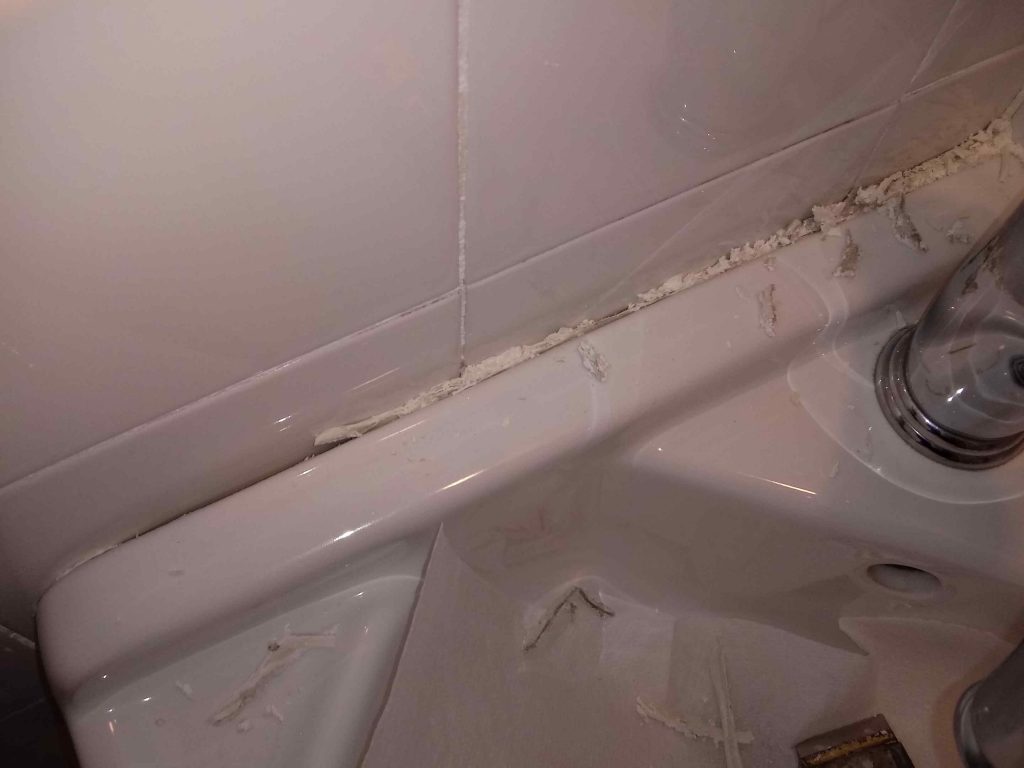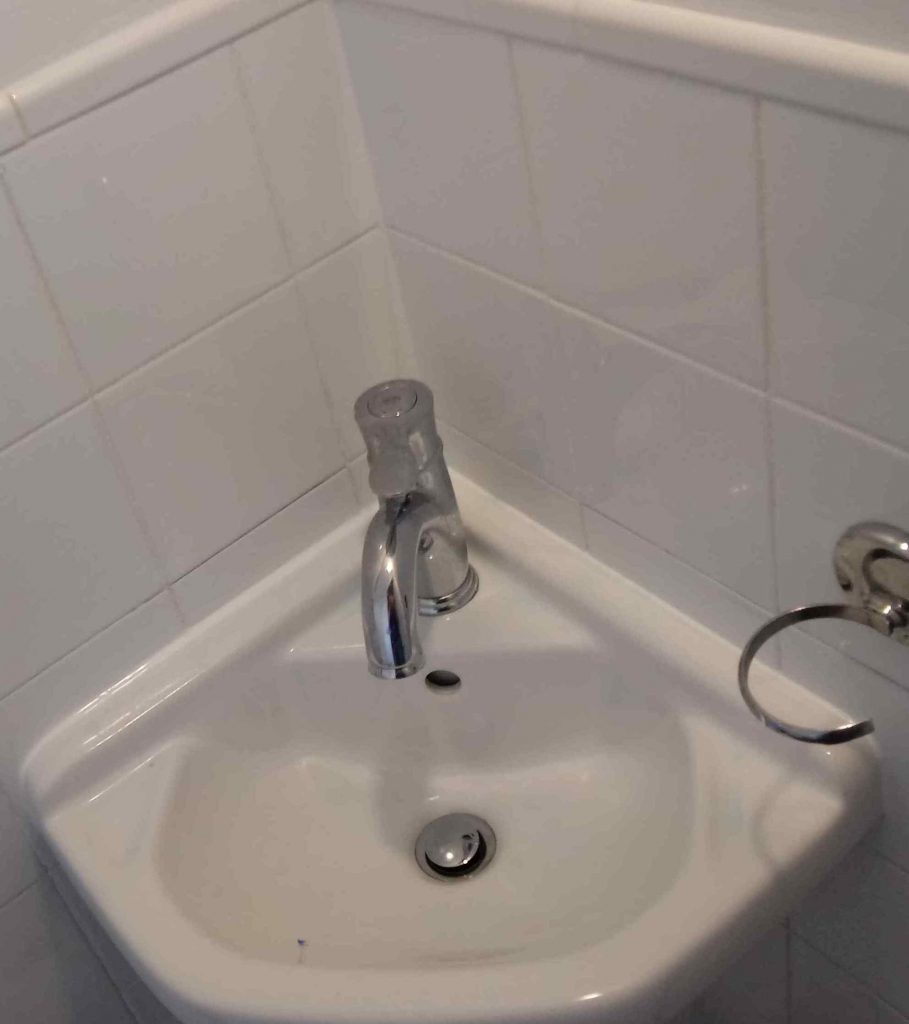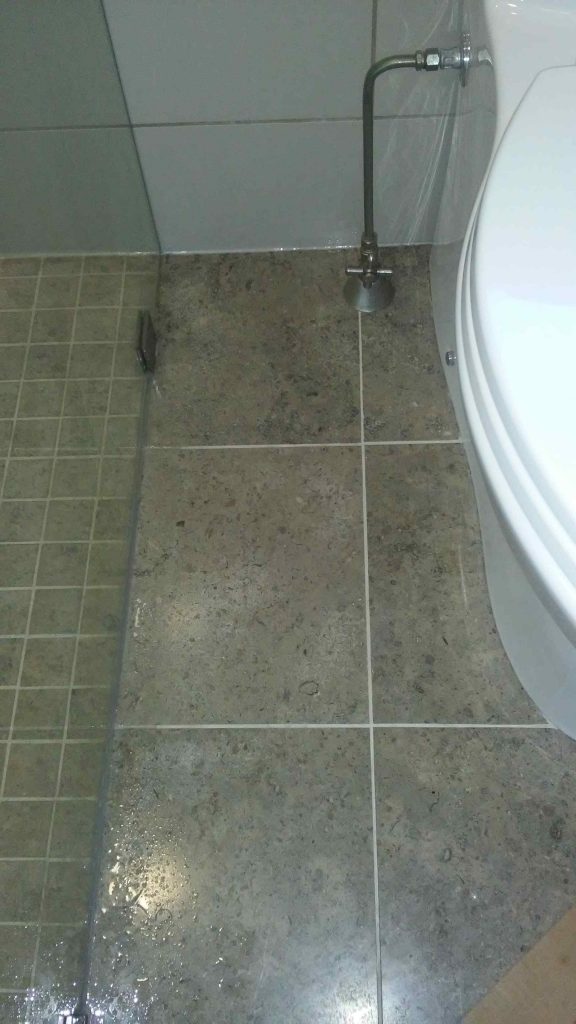I normally don’t announce that I “fix downspouts” because I only have a 6 foot stepladder, and to fully fix downspout issues one has to have the ability to climb pretty high. That said, if a downspout has an issue that lies in its bottom 10 feet, I can fix the issue.
I have a certain fondness for fixing downspouts because my third handymanning client had a downspout problem. Back then I was eager to make money so I took on jobs that I didn’t really know how to do, but I figured I could figure out the issue . . . learning on the job was always a bit of a stress test, and continues to be, but in that case I succeeded, and now I know all the rules.
Anyway, fixing downspouts is actually pretty easy BUT . . . you have to know all the little in’s and out’s. And it amazes me how often I encounter downspouts that break those rules and thus need fixing.
So anyway, a regular client called, and someone had backed a car into a downspout and crushed it, thus:
Not only that, an attachment bracket up about 12 feet had come loose out of the brick mortar, so that needed to be fixed too.
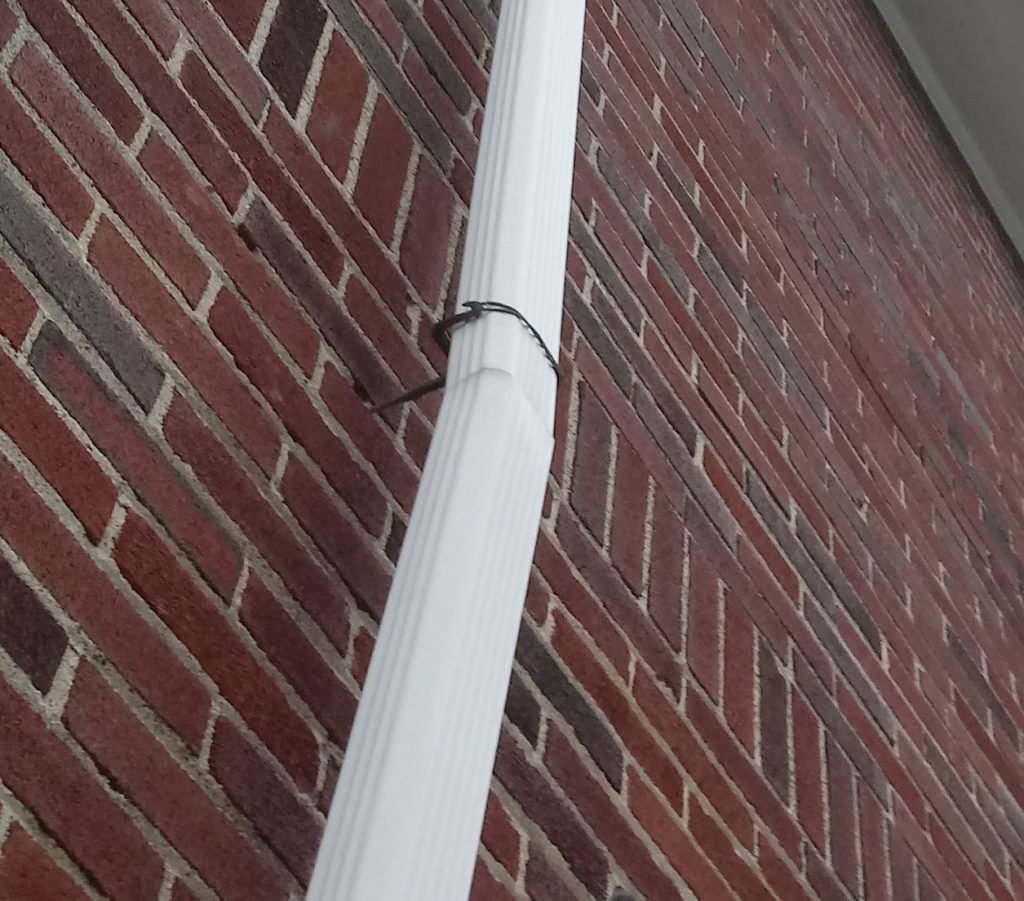 So, I put some construction adhesive in the hole and pounded the connector back into place.
So, I put some construction adhesive in the hole and pounded the connector back into place.
Then I removed the tube, yeesh, it was a ten foot piece:
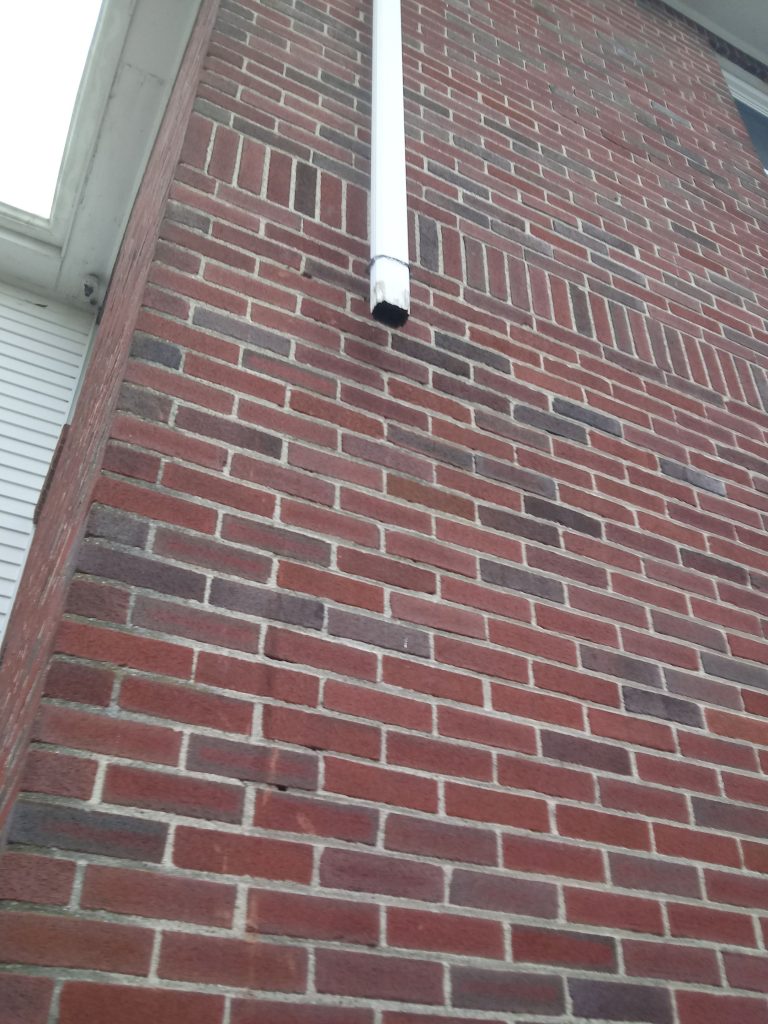 And I put on the new piece, attaching it with a white stainless screw (which had been lacking previously):
And I put on the new piece, attaching it with a white stainless screw (which had been lacking previously):
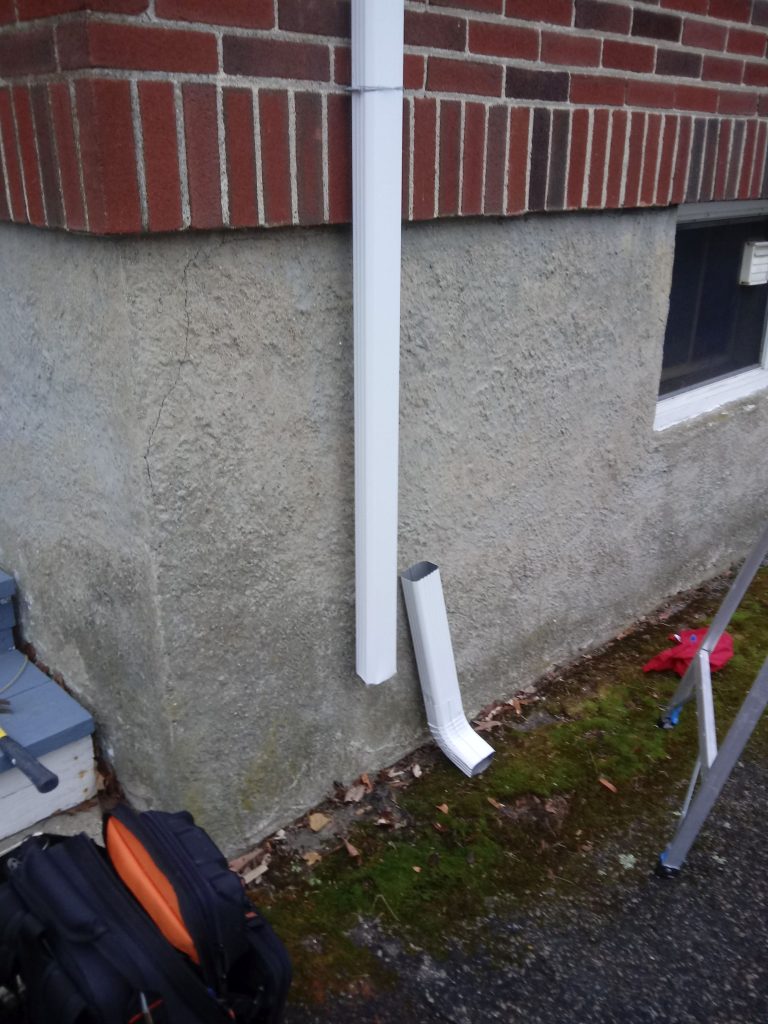 And then I fitted on the bottom piece. Also I added a connector onto the concrete. Now it’s all straight and solid.
And then I fitted on the bottom piece. Also I added a connector onto the concrete. Now it’s all straight and solid.
 Notice the white headed stainless screws. Looks fabulous and is properly attached everywhere.
Notice the white headed stainless screws. Looks fabulous and is properly attached everywhere.
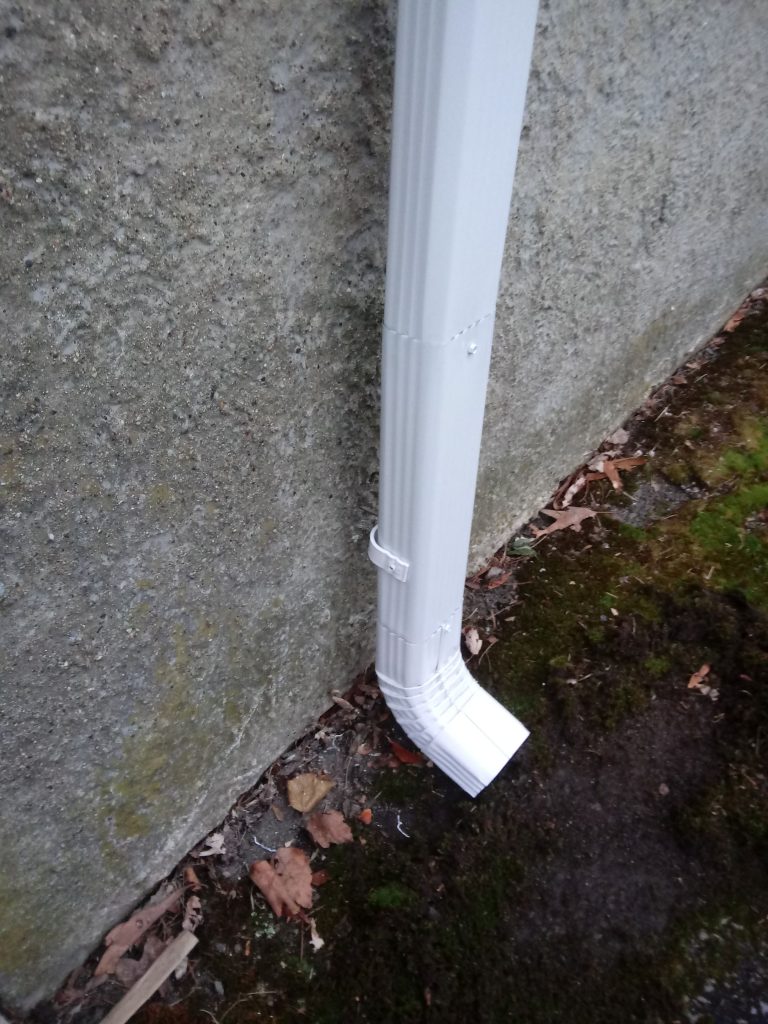 Note I offered to clean up the moss but they said they would do it themselves.
Note I offered to clean up the moss but they said they would do it themselves.

